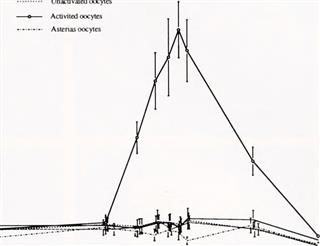The Infertility Organization
Infertility Journal Articles
You found the complete source for complete information and resources for Infertility Journal Articles online.
As the duration of treatment prolonged, psychological suffering is likely to increase [6]. It occurs when a woman either doesn’t ovulate regularly or doesn’t ovulate at all. A history and physical examination can help direct the evaluation. Patients who do not ovulate because of a fault in the pituitary gland may receive this drug as an injection. If oligospermia or azoospermia is noted, hypogonadism should be suspected.
It is specially oriented for cancer patients, whose sperm is destroyed due to the gonadotoxic treatment they are submitted to.[70] Ovaric stem cells: it is thought that women have a finite number of follicles from the very beginning. Microcirugía y fertilición in vitro para la azoospermia obstructiva. (PDF, 5 MB) Chapter 14 from textbook, Avances en reproducción asistida, 1992. Several studies have demonstrated that an increase in BMI is correlated with a decrease in sperm concentration, a decrease in motility and an increase DNA damage in sperm. The dynamics of stress in fertile and infertile couples. Endometriosis is usually more common in women in their mid-twenties and older, especially when postponed childbirth has taken place.[55] Another major cause of infertility in women may be the inability to ovulate. Medical management: - Ovarian suppression of minimal and mild endometriosis diagnosed as the cause of infertility in women does not enhance fertility and should not be offered.
Right here are Some More Resources on Infertility Journal Articles

More Information Around Infertility Journal Articles
Infertility treatment Current problems with conception won’t necessarily stop you from starting a family in the future. Intracytoplasmic sperm injection[edit] ICSI technique is used in case of poor semen quality, low sperm count or failed fertilization attempts during prior IVF cycles. Varicocele and male factor infertility treatment: a new meta-analysis and review of the role of varicocele repair. Risk factors for the formation of antisperm antibodies in men include the breakdown of the blood‑testis barrier, trauma and surgery, orchitis, varicocele, infections, prostatitis, testicular cancer, failure of immunosuppression and unprotected receptive anal or oral sex with men.[23][24] Sexually transmitted infections[edit] Infections with the following sexually transmitted pathogens have a negative effect on fertility: Chlamydia trachomatis and Neisseria gonorrhoeae.
More Info About Infertility Journal Articles
This was set up on 1 August 1991 following a detailed commission of enquiry led by Mary Warnock in the 1980s A similar model to the HFEA has been adopted by the rest of the countries in the European Union. The dynamics of stress in fertile and infertile couples.
Here are Some Even more Resources on Reasons for Infertility After Miscarriage
Blood test: This can assess hormone levels and whether a woman is ovulating. Transplantation of a Human Testis for Anorchia. (PDF, 19 MB) Fertility and Sterility, 1978. It is often prescribed for Crohn's disease or rheumatoid arthritis. First Fallopian Tube-Ovary Transplant Carried Out. (PDF, 2 MB) Welcome Trends in Ob/Gyn, 1985. A systematic review of tests predicting ovarian reserve and IVF outcome. Large submucosal uterine fibroids may make the uterus' cavity bigger, increasing the distance the sperm has to travel. Contents Definition[edit] "Demographers tend to define infertility as childlessness in a population of women of reproductive age," whereas "the epidemiological definition refers to "trying for" or "time to" a pregnancy, generally in a population of women exposed to" a probability of conception.[8] Currently, female fertility normally peaks at age 24 and diminishes after 30, with pregnancy occurring rarely after age 50.[9] A female is most fertile within 24 hours of ovulation.[9] Male fertility peaks usually at age 25 and declines after age 40.[9] The time needed to pass (during which the couple tries to conceive) for that couple to be diagnosed with infertility differs between different jurisdictions. Heterologous or therapeutic insemination, formerly called artificial insemination by donor sperm, refers to the use of frozen sperm that has been quarantined for at least 6 months. [108] Thereafter, the specimen is ready to use once the donor has undergone the necessary screening tests required by the tissue bank, the US Food and Drug Administration (FDA), and the American Society for Reproductive Medicine (ASRM). [111] The source of the sperm can be either anonymous or from a donor designated by the couple.
Previous Next
See also
Infertility Support Group Indianapolis
Infertility in Female Twins
Infertility Tubal Origin Icd 10